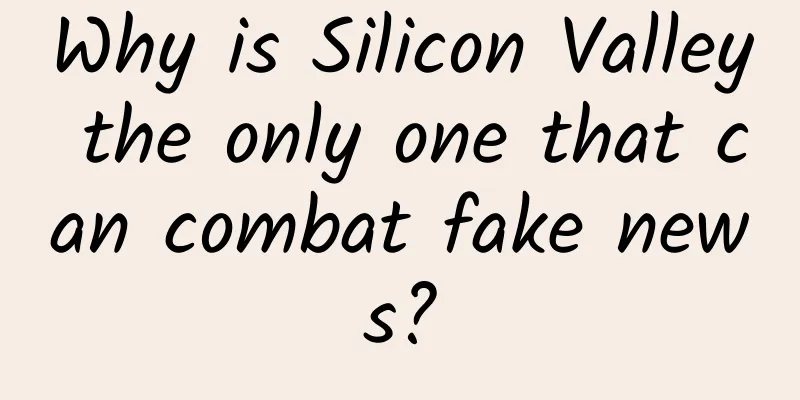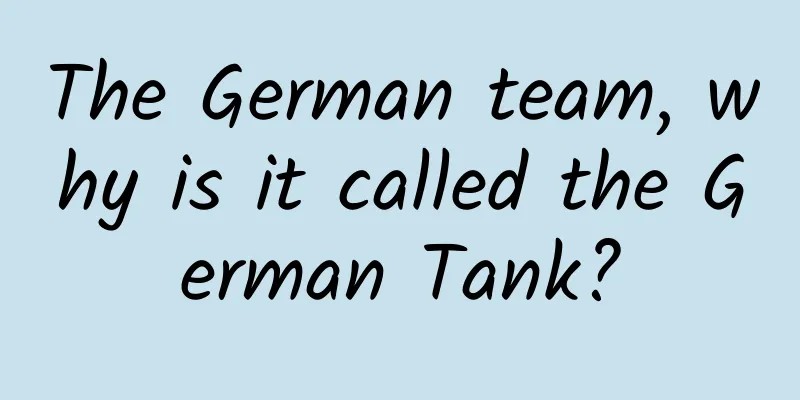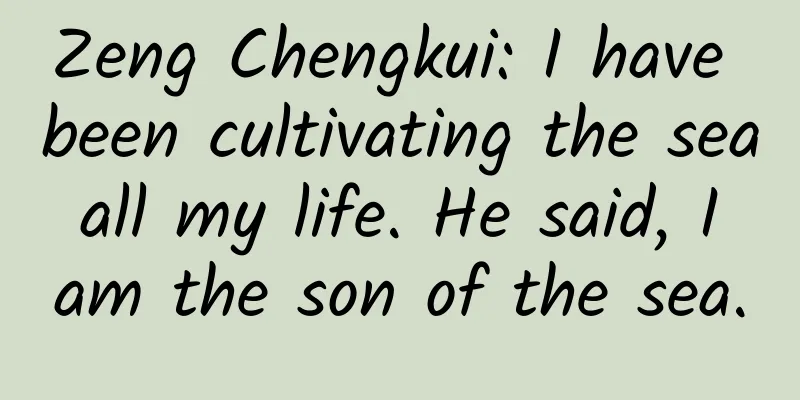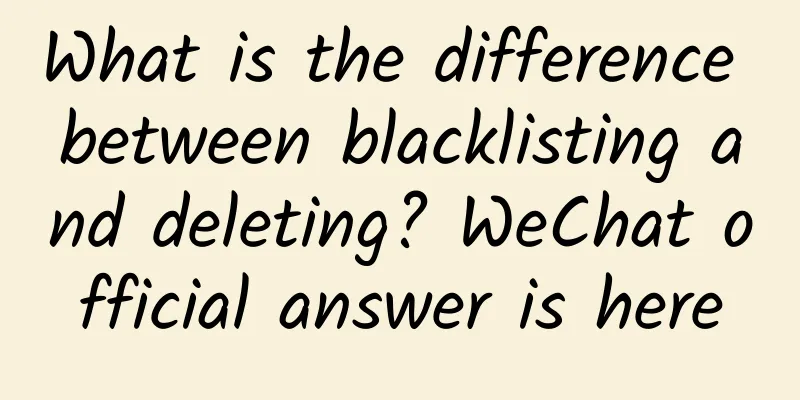Why is Silicon Valley the only one that can combat fake news?

|
According to foreign media reports, as social networks become the platform for most people to obtain information, fake news is becoming increasingly rampant, and traditional media organizations are gradually losing their credibility. It is imperative that technology companies such as Google, Facebook, and Twitter set an example and use technology to weaken the impact of fake news on people's lives. The news used to be trustworthy, but “fake news” has always existed. In the second half of the 20th century in industrial democracies, we enjoyed a period of peace when the news media produced reliable, real news. People held different opinions, but their opinions were based on reliable facts, which were guaranteed by strict journalistic standards, fact-checking, and editorial integrity. Then came the Internet, and with it came social networks. Now, in addition to the three big news sources, you can hear facts and opinions from thousands of sources with varying degrees of credibility. Secret algorithms determine which content spreads more widely and which does not, and they appear invisibly before your eyes. A large number of people with political, commercial or antisocial interests have found ways to game these social algorithms, further accelerating the spread of fake news. Dana Boyd calls this "game-changing the attention economy." Why half-truths are the worst Here’s the thing: Obviously false news is recognizable as absurd and, for that matter, harmless. The worst kind of fake news is what one Russian expert calls “disinformatzya.” Guardian journalist and Russia expert Luke Harding says the Kremlin's "disinformation" tactics are the same ones the KGB mastered during the Cold War. They have been around for decades, but only in Russia. What is new in recent years is that Russia has begun to apply the "disinformation" strategy to English-speaking audiences. Because we are unfamiliar with "disinformation", it is particularly effective. The goal of "disinformation" is not to get people to believe a lie, but to "confuse and deceive everyone else with unfounded conspiracy theories so that one thing has 10 different interpretations," Harding told NPR's Terry Gross. The Russian government has discouraged rational conversation by publishing semi-fake news while "hiring trolls" to spread misinformation and disrupt online conversations with insulting and malicious posts. In Russia, “disinformation” aims to undermine trust in all institutions so that a “strong man” like Putin can present himself as the only solution. Outside of Russia, “disinformation” helps Russia destabilize and weaken its enemies, while also allowing Russian leaders to convince their citizens that the West is just as corrupt and dysfunctional as Russia. The worst part is that this abusive “disinformation” tactic is designed to disrupt sabotage efforts, so American and European organizations, trolls, and politicians have learned to use it without any guidance. This is what’s new, and why the problem of “fake news” is so serious right now. Furthermore, the label of “fake news” has been irresponsibly slapped on people, making matters worse. The National Catholic Register has slammed an Atlantic Monthly article about the political effects of ultrasound technology as "fake news." When CNN reported news that disagreed with President Trump, he began labeling it "fake news." This week, a post in the Canadian Financial Post went round in circles about "fake news". The author of the article criticized the Canadian government for intentionally cracking down on some "fake news" while the government itself was spreading "fake news". This article warns us that it may also be "fake news". There is no doubt that "fake news" has become a "trend" now. Australia's Macquarie Dictionary named "fake news" as the "word of the year". CNN has established a position to combat "fake news", pledging to be responsible for investigating, reporting and exposing fake news rather than creating it. Governments in Germany, Canada, the Czech Republic and other countries are setting up review boards to address the problem of fake news. These measures are good, but they will not have the desired effect because they cannot affect the spread of fake news on social networking sites. Fake news is a technology error. So, can technology fix it? What Silicon Valley can do The problem of fake news has gotten so bad lately that companies in Silicon Valley and elsewhere are looking for solutions to a problem that tech has created. This week, Google announced that it had banned 200 publishers from its AdSense advertising network. Because of changes to the company's policy on misleading content, it didn't release a list of the banned sites. Now, Google has added a special listing for sites that mimic news sites. Although the word "ban" sounds a bit heavy, in fact, Google only deprives these websites of advertising services, and they can still find other advertising opportunities. Facebook has reportedly updated its Trending section to reduce the viral sharing of fake news. It also took an interesting approach. Now, Facebook's algorithm will exclude trending news from only one source. Unless a story is mentioned by other media (based on the original story reported by another media), it will not appear in the Trending section. Unfortunately, people are still easily fooled. Fake news sites can evade censorship by simply publishing their content on different websites and improving their own content, which many fake news sites have already done. Facebook also promised to de-personalize the topics in the popular section and show the same content to all users. Le Monde has created a database called "Decodex" that includes 600 fake news websites on the Internet in February. The database is compiled by the publisher's fact checkers. Most of the websites are fake, but foreign websites such as the American "Breitbart" and "Daily News Bin" are also included. Users can copy the URL address to the database to check whether the online news report is false. Better yet, the color-coded system of the Chrome or Firefox browser plug-in can be used to remind readers. Le Monde also plans to release a Facebook Messenger applet to verify facts. This approach may work. Researchers at the University of Cambridge found that "vaccination" is the best way to prevent people from believing fake news. (The study showed that when false news was corrected, people continued to remember and believe it.) However, when subjects first learned the real news, then were told that a group of people were spreading the fake news, and then learned the content of the news, they continued to believe the real news. In other words, the method of identifying fake news only works if it is identified before it spreads. A 19-year-old Stanford student named Karan Singhal created a "fake news detector" using artificial intelligence. It analyzes 55 different criteria, including writing style, layout, and domain names. You can try it for free. Climate scientists and technologists have also teamed up to combat fake news, creating a new website called climatefeedback.org. The site allows climate scientists to review articles about the climate. The scientists/reviewers add annotations and links to the articles and rate their credibility. The good thing about this approach is that each article is independently reviewed (rather than labeling all articles on a site as "false"). For example, the site can criticize one Guardian article but praise another. Even better, the site actually guides media criticism and questioning from a scientific perspective. One of the most aggressive moves against fake news has come from Snapchat, which updated its content guidelines for publishers to combat fake news, according to a New York Times report this week. Snapchat wants to reduce clickbait ahead of its expected IPO, and now bans profanity, pornography, violence and misleading headlines from its Discover section. But Snapchat has also taken aim at fake news. The company states that all content must be fact-checked and accurate, and publishers cannot impersonate entities or individuals. Although it's unclear how Snapchat will police these rules, the level of regulation they've described is already the strictest of any social network. Snapchat did the right thing and said: We are the publisher. We are responsible for the content. This is the only responsible policy. What not to do At this point, Twitter and Facebook's attitudes are illogical. They reserve the right to ban, censor, or delete any content they want, Facebook citing its "community standards" and Twitter's "Twitter Rules." Both companies only take action when they are forced to by public pressure. But when it comes to fake news, they throw their hands up, saying they are not publishers and support free speech, or make small changes to their screening to appease critics. Recently, a series of analyses have shown that fake news did not determine the outcome of the recent US election, so we should not worry about the problem of fake news. But who wants to live in a wild world where people believe propaganda, conspiracy theories and fake news are true and news is false? Where scientific research is considered political and politicians' assertions about science are not? It’s time for Google, Facebook, and Twitter to take fake news seriously. Fake news can and must be identified, banned, ignored, labeled, or otherwise mitigated. The only thing that can save us from the scourge of fake news and “disinformation” is Silicon Valley. As a winner of Toutiao's Qingyun Plan and Baijiahao's Bai+ Plan, the 2019 Baidu Digital Author of the Year, the Baijiahao's Most Popular Author in the Technology Field, the 2019 Sogou Technology and Culture Author, and the 2021 Baijiahao Quarterly Influential Creator, he has won many awards, including the 2013 Sohu Best Industry Media Person, the 2015 China New Media Entrepreneurship Competition Beijing Third Place, the 2015 Guangmang Experience Award, the 2015 China New Media Entrepreneurship Competition Finals Third Place, and the 2018 Baidu Dynamic Annual Powerful Celebrity. |
<<: How far are smart connected cars from being on the road?
Recommend
Mozilla: We have an advantage over Microsoft in the mobile operating system market
Mozilla is an open source Internet software compa...
Bees crawling all over the curtains, alligators sneaking into the auto repair shop! What should you do if you encounter dangerous wild animals?
last year Wild Asian elephants escape from Xishua...
There is no way to catch them all! Why are power plants so afraid of "jellyfish infestations"?
A bumper harvest of jellyfish brought an unexpect...
[App Promotion Case] Didi Taxi: 4 Amazing Secrets Behind the Sky-High Subsidies
Recently, the battle between Didi and Uber is get...
Why is Xiaomi always being hacked? What is the real problem?
At Xiaomi’s autumn new product launch conference ...
Understand the APP promotion process in one article
After the App is developed, promoting the App nat...
8 ways to make your app icon stand out
The app icon plays a very important role in the c...
IDC: China's tablet shipments in the first quarter reached 3.73 million units, with a 29.8% drop in production capacity
IDC China's latest quarterly tablet tracking ...
【Creative Cultivation Program】T-shirts become cotton clothes? Why did autumn suddenly come in one day?
Have you worn long johns today? A few days ago, w...
Use the pyramid principle to operate your product well!
During the Spring Festival, I used my free time t...
WeChat always freezes? Just adjust the threshold to 2000! The method is simple and practical
WeChat on your mobile phone is always stuck and n...
Essential skills for marketers: three types of landing page design tools recommended
The landing page is an important part of relation...
What to do if you get "hot" after eating oranges, eating melon seeds, and drinking beverages during the Chinese New Year? 4 ways to relieve it
During the holidays at home, I can’t stop eating ...
How to view Didi’s friend link exchange log? What is the use of chain change log?
How to view Didi’s friend link exchange log? What...
What happens if you don't turn off the lights at night? It may kill small animals...
What happens if you don’t turn off the lights at ...









